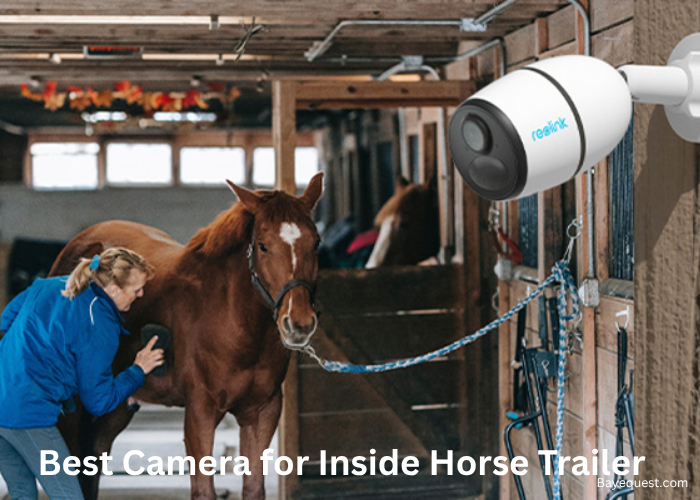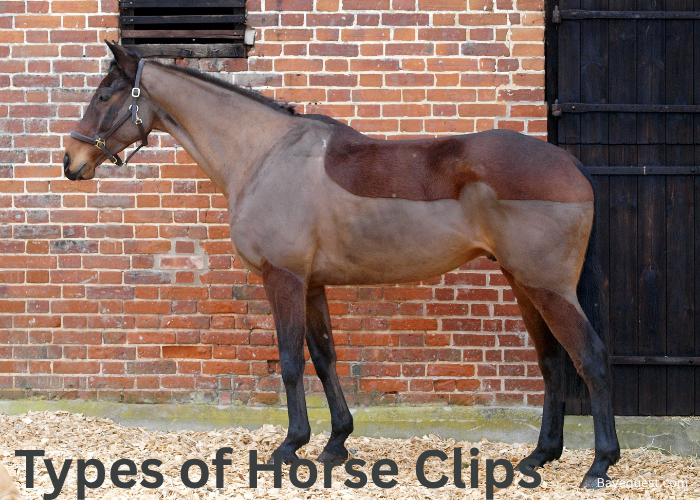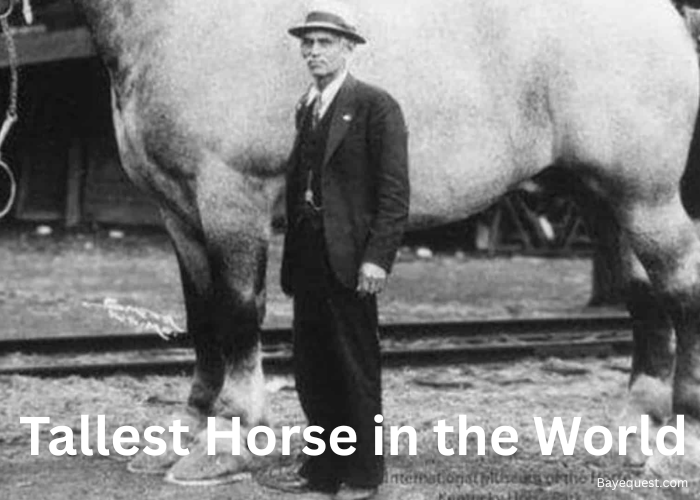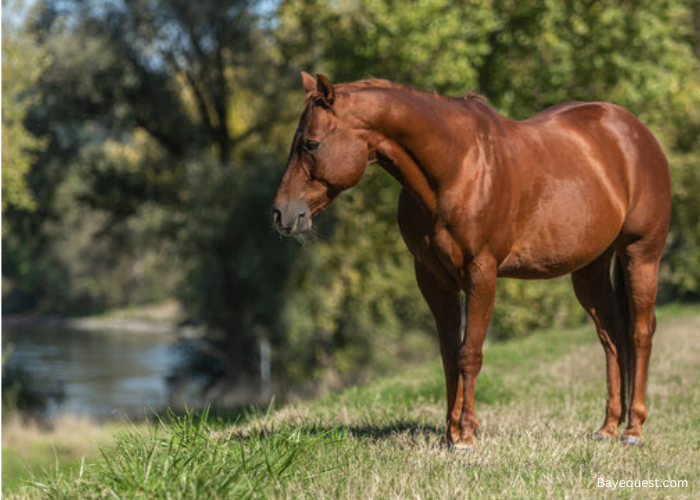Do you know why a well-fitted saddle is crucial for your horse? It’s not just about comfort; it’s about safety.
Riding with a poorly fitted saddle can be like wearing shoes that just don’t fit. That’s uncomfortable and downright risky.
Today, we’re diving into perfectly fitting a saddle to your horse, ensuring every ride is a smooth and enjoyable experience. Whether you’re a seasoned rider or just starting out, getting the fit right can make all the difference.
Let’s saddle up and get started.
How to Fit a Saddle to a Horse: Key Takeaway
- Assess your horse’s back
- Position the saddle on your horse’s back
- Test with clearance
- Check the relationship of the pommel to the cantle
- Check to see if the seat is level
- Tree width does not necessarily ensure a proper saddle fit
- Check channel or gullet clearance
- Check panel pressure and contact
- Check the stability of the saddle
- Check the seat length
- Girth the saddle, mount and recheck the fit
The Importance of Saddle Fit
Have you ever wondered why a well-fitted saddle matters? It’s all about comfort and safety. Riding with a saddle that doesn’t fit is like wearing the wrong size shoes—it just doesn’t work.
Here are the key importances of a well-fitting saddle:
Comfort for the horse. A well-fitting saddle avoids causing pressure points, rubbing, and discomfort, ensuring the horse remains at ease.
Enhanced performance. When a saddle fits correctly, the horse can move freely and use its body efficiently.
Rider safety. A saddle that fits well helps the rider maintain a proper, stable position, reducing the risk of slipping or falling off.
Prevents behavioral issues. A horse experiencing discomfort from a poorly fitting saddle may exhibit behavioral issues like bucking, rearing, or refusing to move. A good fit helps in eliminating these issues.
Long-term health of the horse. Continuous use of an ill-fitting saddle can lead to long-term health issues for the horse, such as muscle atrophy, spine deformities, and chronic pain.
Improved communication. A good saddle fit ensures better contact between the rider and the horse. This allows subtle cues and commands to be more effective, improving the overall harmony and responsiveness between the rider and the horse.
Parts of a Saddle
Understanding the parts of a saddle helps you see how they all work together when you’re riding. Each part has its own job: keeping you and your horse comfortable and safe.
The parts are:
Seat: This is where you sit. It’s designed to keep you comfortable and secure.
Stirrups: These are the metal frames that hang down on each side. You put your feet in them to help balance and control.
Stirrup leathers: These are the straps that hold the stirrups. You can adjust them to fit your leg length.
Girth or cinch: This strap goes around the horse’s belly. It keeps the saddle in place.
Pommel: Found at the front of the saddle, the pommel provides stability for the rider. In Western saddles, it’s often higher and called a horn.
Cantle: This is the back part of the seat. It’s slightly raised to prevent sliding off.
Flaps: These hang down on the sides of the saddle, under your legs. They protect your legs from rubbing against the horse.
Billets: These are small straps under the flap. You hook the girth to them to secure it.
How to Fit a Saddle to a Horse
The steps of fitting a saddle involve:
Assess your horse’s back
Begin by examining your horse’s back thoroughly. You’re looking for any abnormalities like swelling, heat, or sensitivity that could state pain or discomfort.
This step is crucial because a healthy, even back is the foundation for proper saddle fit. Feel along the spine and muscles for any unevenness or signs of previous ill-fitting saddles.
Position the saddle on your horse’s back
Carefully place the saddle on your horse’s back without a saddle pad. It should sit in the middle of the horse’s back, not too high up on the withers or too far back towards the loins.
The saddle should lie flat against the horse’s back with no rocking or gaps.
Test with clearance
Once the saddle is in place, check for adequate clearance at the withers. You should be able to fit a few fingers between the withers and the underside of the saddle’s pommel.
This ensures the saddle doesn’t press down and cause discomfort when your horse moves.
Check the relationship of the pommel to the cantle
Look at how the front and back of the saddle sit in relation to each other.
Ideally, they should be level or the cantle slightly higher than the pommel, depending on the type of saddle and riding discipline
Check to see if the seat is level
When viewing the saddle from the side, the seat should appear level, allowing you to sit evenly without tipping forward or backward.
An unlevel seat can affect your balance and the horse’s movement.
Check the treewidth
The tree of the saddle, which forms its internal framework, must be the correct width for your horse’s back. It should accommodate the horse’s shoulder movements without pinching.
To test this, observe how the saddle sits relative to the horse’s shoulder blades. There should be enough room to allow free movement but not so much that the saddle shifts sideways.
The width is correct if the saddle remains centered and stable as the horse moves.
Check channel or gullet clearance
The gullet or channel runs down the middle of the saddle’s underside, directly over the horse’s spine. This space should’nt touch the horse’s spine at any point to avoid pressure and potential injury.
Check the clearance by running your hand along this channel from front to back. You should feel a consistent space wide enough to avoid contact with the spine.
This is about two to three fingers wide, ensuring protection during all types of movement.
Check panel pressure and contact
The panels are the padded parts of the saddle that rest against the horse’s sides. They distribute the rider’s weight across a larger area.
For a proper fit, the panels should contact the horse’s back evenly throughout their length, without any gaps or uneven pressure points. Feel under the saddle along both sides; the pressure should feel uniform.
Any bulging or dipping indicates the panels might not be conforming well, which could lead to discomfort or even damage to the horse’s back muscles.
Check the stability of the saddle
A stable saddle doesn’t shift or rock when lightly pushed from side to side or front to back. Test the saddle’s stability by applying gentle pressure in these directions.
It should remain firmly in place. Instability can be a sign of improper fit, such as incorrect girth tightness, tree width, or uneven panel contact. All these could affect the horse’s balance and control.
Check the seat length
The length of the saddle should be appropriate for the size of your horse’s back. It should not extend beyond the horse’s last rib.
Verify this by locating the last rib and ensuring the saddle does not go past this point. A sized saddle will end before the last rib and will not interfere with the horse’s hips or hindquarters movement.
Girth the saddle, mount and recheck the fit
After securing the saddle with the girth, mount your horse using a proper technique to avoid shifting the saddle out of place.
Once mounted, go through a quick checklist. Ensure that the saddle still provides sufficient wither clearance.
Check the level of the seat, and confirm that there is no new pressure under the panels. Your weight in the saddle can change its fit.
So these checks are crucial to ensure the saddle still fits properly under riding conditions.
Saddle Fit for the Rider
Fitting a saddle isn’t just about making sure it’s right for the horse; it’s also important for the rider. Let’s talk about how to make sure a saddle fits you properly.
First, sit in the saddle. You should have about four fingers’ worth of space between your body and the saddle’s pommel. This space helps prevent you from feeling cramped or too close to the horse’s withers.
Next, look at the length of the saddle seat. When sitting, the back of the seat should not press into your buttocks; you should be able to fit a hand’s width between your seat and the saddle’s cantle. This ensures you have enough room to adjust your position comfortably as you ride.
Also, check the stirrup length. Your leg should form a natural, relaxed angle with your foot resting in the stirrup without having to stretch or shrink. The right stirrup length helps keep your balance and supports proper riding posture.
Lastly, consider how you feel in the saddle. You should feel balanced, not leaning forward or backward. A well-fitting saddle helps you maintain this balance effortlessly, making your ride smoother and safer.
By ensuring the saddle fits both you and your horse, you enhance the riding experience and safeguard both your well-being and your horse’s health.
Children’s Saddle Fitting
Fitting a saddle for children is much like fitting one for adults, but with a few extra considerations to keep in mind.
First, make sure the saddle is the right size for the child. They should be able to sit comfortably with a bit of space between them and the pommel of the saddle. This space is important because it gives them room to adjust and move without feeling cramped.
Then, check the stirrups. They need to be short enough so that the child can bend their knees and maintain a steady leg position.
However, you also don’t want them too short, which could make it hard for the child to stay balanced.
Also, ensure the saddle isn’t too heavy for the horse, especially if the horse is smaller or younger. The saddle should fit the horse well, without sliding or pinching, to keep both the rider and the horse comfortable.
Keep in mind that children grow quickly, so you’ll need to check the fit of the saddle regularly. They might outgrow a saddle faster than you’d expect, and a good fit is key to keeping them safe and secure while they ride.
Lastly, make sure the child feels confident and balanced in the saddle. A well-fitting saddle helps them feel secure and stable.
Saddle Fitting for a Dressage Rider
Fitting a saddle for a dressage rider is all about ensuring both comfort and precise control.
Start with the seat of the saddle. It should be deep enough to give the rider a secure feel, helping them sit upright and maintain a steady, balanced posture. This is key in dressage, where posture and seat are everything.
Next, check the length of the flaps. Dressage saddles have longer flaps than jumping saddles to accommodate the longer leg position used in dressage. These flaps should allow the rider’s legs to hang straight down from the hip, providing a smooth line and effective leg aids.
The stirrups also need careful adjustment. They should be set so the rider can keep a slight bend in the knee, helping maintain that elegant, vertical leg position that’s so important in dressage.
Pay attention to the saddle’s position on the horse. It should allow for clear, unimpeded communication of the rider’s aids. The saddle needs to fit the horse perfectly to avoid any discomfort that might distract from their performance.
Lastly, the balance of the saddle is crucial. It should not tip the rider forward or back. A well-balanced saddle supports the rider’s natural alignment, allowing for more effective and subtle commands.
Read also: How many types of saddles are there?
Western Saddle Fitting
Fitting a Western saddle properly is essential for both the comfort of the rider and the horse. Here’s how to make sure a Western saddle fits right.
First, check the fit on the horse. The saddle should sit evenly on the horse’s back, not tilting forward or backward. The front of the saddle, the swell, shouldn’t press into the horse’s shoulders. It should allow enough room for the shoulders to move freely.
Next, look at the width of the saddle’s tree. It should match the horse’s back shape closely. Too wide, and the saddle will slide; too narrow, and it’ll pinch. A good fit means the saddle stays stable even when the horse moves.
Check on the length of the saddle. It shouldn’t extend beyond the horse’s last rib. A saddle that’s too long can put pressure on the horse’s kidneys and other sensitive areas in the back, causing discomfort.
For the rider, the seat of the Western saddle should feel comfortable and secure. You should be able to sit squarely in the middle of the seat with a slight space between you and the fork, or the front of the saddle.
Make sure the stirrups are the right length. Your legs should be able to hang naturally, allowing your feet to rest in the stirrups without reaching or bending too much.
Lastly, when everything seems well-placed, do a final check by walking your horse around. This helps you see if the saddle shifts or if your horse shows any signs of discomfort.
Take time to fit a Western saddle to ensure your safety and comfort.
Fitting a Hunter Jumper Saddle
Fitting a hunter jumper saddle correctly is crucial for the effectiveness and safety of both the rider and the horse during jumping. Here’s how you can ensure a good fit.
Start by checking the saddle on the horse without a pad. Place it on the horse’s back, slightly behind the shoulder blades to allow full range of motion. The saddle should sit level on the horse’s back, not tipping forward or backward.
Next, look at the wither clearance. There should be enough space under the pommel to fit a few fingers vertically, even when the rider is mounted. This prevents the saddle from pressing down on the withers when the horse jumps.
Check the tree width. It needs to be wide enough to fit around the horse’s shoulders without pinching. A correctly fitting tree will help distribute the rider’s weight evenly, reducing stress on any single part of the horse’s back.
Examine the panel contact. The panels should make even contact with the horse’s back, providing a stable base without gaps. Uneven pressure can lead to discomfort and affect the horse’s performance.
The length of the saddle should also be appropriate. It must not extend beyond the last rib so as not to interfere with the horse’s natural movement.
For the rider, the seat size and flap length are important. The seat should allow you to sit comfortably, providing support without constraining movement. The flaps should be positioned and sized to support your leg in a natural, effective position for control during jumps.
Finally, adjust the stirrups to the right length. They should allow you to maintain a secure, balanced position over fences. Your knee should bend comfortably, with your leg forming a stable base of support.
After these adjustments, have a ride in the saddle to see how it feels in motion. Make sure it remains stable and comfortable as you and your horse move.
Common Saddle Fit Problems and Solutions
When it comes to saddle fitting, a few common problems can arise, affecting both horse and rider comfort and performance. Let’s explore these issues and how to address them effectively.
1. Bridging
This occurs when a saddle only contacts the horse’s back at the front and rear, leaving a gap in the middle. This can cause pressure points and discomfort.
Solution. Use a saddle with a different curve to the tree, or consider using a corrective pad that fills in the gap while you find a better-fitting saddle.
2. Pinching at the withers
If the saddle is too narrow, it can pinch the withers, causing pain and restricting movement.
Solution. You’ll need a saddle with a wider gullet to provide sufficient clearance at the withers.
3. Slipping sideways
A saddle that slips to one side usually indicates an uneven fit or an imbalance in the horse’s muscle development.
Solution. Check if the saddle needs re-balancing or if additional training and conditioning are needed to correct the horse’s muscle symmetry.
4. Too far forward
A saddle positioned too far forward can impede the shoulder movement, especially critical in disciplines like jumping.
Solution. Reposition the saddle back so it does not sit over the shoulder blades and ensure it stays in place with proper girth placement.
5. Too long
If the saddle extends beyond the horse’s last rib, it can put pressure on the lumbar area, which is less capable of supporting weight.
Solution. Choose a saddle that is the correct length for your horse’s back, ensuring it does not go past the last rib.
6. Uneven pressure
When a saddle causes uneven pressure on the horse’s back, it can lead to soreness and behavior changes.
Solution. Regularly check the padding and ensure that the panels are evenly stuffed. Adjustments or reflocking might be necessary to achieve an even pressure distribution.
7. Gullet too wide
While a narrow gullet can pinch, a gullet that’s too wide will sit too low on the horse’s back, reducing wither clearance.
Solution: Opt for a saddle with a narrower gullet or use a thicker pad temporarily to improve the fit.
8. Poor rider fit
If the rider feels unstable or uncomfortable, the saddle may not be the right size or shape.
Solution. Ensure the saddle fits the rider properly. The seat size should allow you to sit comfortably with about a hand’s width behind your seat to the edge of the saddle.
Saddle Fitting Tips and Tricks
Saddle fitting is both an art and a science, essential for the comfort and performance of both horse and rider. Here are some practical tips and tricks to ensure a good saddle fit:
Know your horse’s anatomy. Familiarize yourself with the key areas of your horse’s back, including the withers, shoulders, and where the ribs end. Understanding these can help you better assess how a saddle should sit.
Use a measuring tape. Before shopping for a saddle, measure your horse’s back to get an idea of what size and shape you’ll need. This can prevent a lot of guesswork and adjustments later.
Check for symmetry. When placing the saddle on your horse’s back, make sure it sits evenly on both sides. An asymmetrical fit can lead to uneven pressure and discomfort.
Watch the wither clearance. Always ensure there’s enough clearance between the saddle and your horse’s withers. This is crucial to avoid pressure and rubbing, especially when the horse moves.
Feel under the saddle. After placing the saddle, run your hand under it to check for any points where the pressure feels uneven. This can help you spot issues before they cause discomfort to your horse.
Saddle pad compatibility. Use a saddle pad that complements the fit of the saddle. Pads should not correct a bad fit but can enhance comfort by distributing pressure more evenly.
Trial in motion. Always try a saddle on a ride, not just statically. A saddle that seems to fit well when still may shift or pinch when the horse is moving. Pay attention to how your horse moves and reacts.
Regular re-evaluation. Horses change shape based on their diet, age, and exercise regimen. Regularly check the saddle fit to make sure it continues to suit your horse over time.
Seek professional help. When in doubt, consult a professional saddle fitter. They can provide invaluable advice and make adjustments that ensure the best fit.
Document the fit. Keep a record of your saddle fit checks, including any changes you notice over time. This can be helpful for tracking your horse’s development and any necessary adjustments.
How to Tell When the Saddle Doesn’t Fit
Knowing when a saddle doesn’t fit right is key to keeping your horse happy and healthy.
Watch for signs like your horse being fussy when you saddle up or showing discomfort by swishing its tail or pinning its ears. After a ride, check for uneven sweat marks under the saddle, which can show where it’s pinching or not sitting right.
If the saddle moves around a lot, like slipping to the side or sliding forward or back, that’s another red flag.
Also, look for any red spots, bald patches, or swelling on your horse’s back after you take off the saddle.
These are sure signs that the saddle isn’t fitting well. Keeping an eye on these things can help you catch problems early and keep your rides safe and enjoyable.
Conclusion
And there you have it. Fitting a saddle to your horse doesn’t have to be a puzzle. With the right approach and a bit of patience, you can ensure your horse is as comfortable and happy as can be.
Remember, a well-fitted saddle means more enjoyable rides and a healthier horse. So, take the time to check the fit regularly, watch for any signs of discomfort, and always keep your horse’s well-being at the forefront.
Also, find out how to clean saddles in our other blog.
Here’s to many happy trails ahead with your perfectly fitted saddle.








